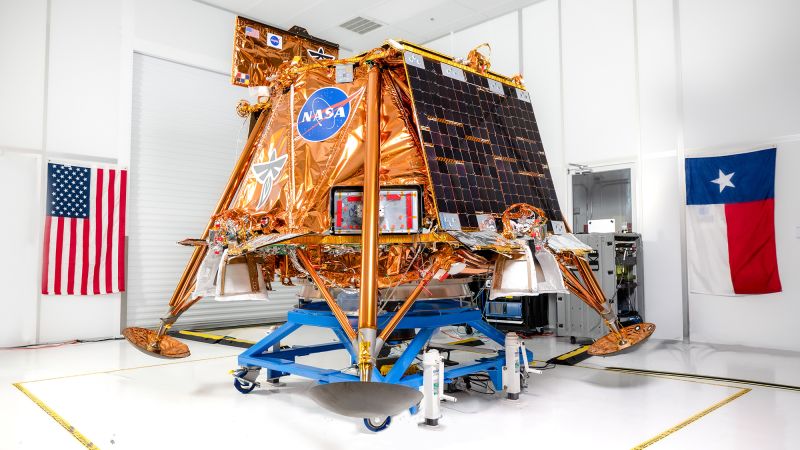The SpaceX Falcon 9 rocket is gearing up for a significant launch as it prepares to deliver two lunar landers to the moon. This mission marks a pivotal event in what experts anticipate will be an exciting period packed with various moon explorations. The renewed interest in lunar exploration stems from ongoing efforts to establish a sustained human presence on the moon. The anticipated launch is scheduled for 1:11 a.m. ET on Wednesday from NASA’s famed Kennedy Space Center in Florida, with the agency planning to stream the event live approximately 40 minutes before liftoff for viewers around the globe.
Inside the rocket’s streamlined nose cone sits Blue Ghost, a lunar lander standing 6.6 feet tall, developed by Firefly Aerospace, which is based in Cedar Park, Texas. The mission that Blue Ghost embarks on is uncrewed, representing Firefly Aerospace’s inaugural effort to deploy a spacecraft onto the lunar surface. As a key contractor under NASA’s Commercial Lunar Payload Services initiative related to the Artemis project, Firefly is poised for a transformative journey as NASA looks to return humans to the moon for the first time in over half a century.
Firefly Aerospace CEO Jason Kim expressed optimism about the mission in December, stating that he has complete faith in his team’s capabilities, even while acknowledging the uncertainties associated with the success of Blue Ghost’s first flight. Joining the Blue Ghost lander on this mission is another lunar lander named Hakuto-R, developed by Tokyo-based Ispace, which stands at 7.5 feet tall. This launch represents Ispace’s second attempt to send its Hakuto-R spacecraft to the moon, aiming to build upon initial learnings from its earlier mission.
Ispace is primarily focused on commercial opportunities, intending to facilitate lunar missions for agencies and enterprises keen on utilizing the moon’s resources. The company traces its origins to the Google Lunar XPrize, a competition designed to inspire innovation in space technology. Ispace’s first lunar landing attempt in 2023 did not succeed; the Hakuto-R spacecraft crash-landed, an incident attributed to inaccuracies regarding its altitude. Newly equipped with insights gained from this experience, Ispace is determined to ensure a successful subsequent landing.
Following the launch, Blue Ghost will spend approximately 25 days in Earth’s orbit before embarking on a four-day voyage to the moon, concluding with a landing attempt about 45 days post-launch. In contrast, the Hakuto-R lander, named Resilience, will navigate a slower trajectory to the moon, estimated to take four to five months. This approach allows for comprehensive system verifications during the extended journey.
The Blue Ghost lander aims to land near Mons Latreille, part of a volcanic region located within the Mare Crisium, or “Sea of Crises.” It carries an array of scientific instruments and technological demonstrations, aiming to further lunar science by testing satellite navigation and examining lunar regolith. The lander also aims to document phenomena like the lunar horizon glow—a rare spectacle only witnessed by Apollo 15 and 17 astronauts—using high-definition video.
Simultaneously, Ispace’s Resilience lander is targeting the Mare Frigoris, the “Sea of Cold,” in the moon’s northern hemisphere. This location was chosen for its flat terrain, which could provide a less complicated landing environment. Additionally, Ispace is sending a miniature rover called Tenacious to explore the lunar surface, co-funded by the Luxembourg Space Agency.
Both missions symbolize humanity’s persistent quest for lunar exploration, echoing the dreams and aspirations of past endeavors. Beyond mere scientific inquiry, the missions also incorporate artistic expressions, such as a miniature red house—dubbed the “Moonhouse”—created by Swedish artist Mikael Genberg, symbolizing a collective human aspiration toward exploration and collaboration.
Together, the missions of Blue Ghost and Hakuto-R are set against the backdrop of an exciting and ambitious chapter in interplanetary exploration, fostering an environment where both scientific and cultural innovations can thrive as humanity continues its quest among the stars.











